DeWalt DW938 Handleiding
DeWalt
Zaagmachine
DW938
Bekijk gratis de handleiding van DeWalt DW938 (7 pagina’s), behorend tot de categorie Zaagmachine. Deze gids werd als nuttig beoordeeld door 53 mensen en kreeg gemiddeld 4.3 sterren uit 27 reviews. Heb je een vraag over DeWalt DW938 of wil je andere gebruikers van dit product iets vragen? Stel een vraag
Pagina 1/7

Definitions: Safety Guidelines
The definitions below describe the level of severity for each signal word. Please read
the manual and pay attention to these symbols.
DANGER: will Indicates an imminently hazardous situation which, if not avoided,
result in death or serious injury.
WARNING: could Indicates a potentially hazardous situation which, if not avoided,
result in death or serious injury.
CAUTION: may Indicates a potentially hazardous situation which, if not avoided,
result in minor or moderate injury.
CAUTION: Used without the safety alert symbol indicates a potentially hazardous
situation which, if not avoided, result in may property damage.
IF YOU HAVE ANY QUESTIONS OR COMMENTS ABOUT THIS OR ANY D WALT TOOL, E
CALL US TOLL FREE AT: 1-800-4-DEWALT (1-800-433-9258).
WARNING: To reduce the risk of injury, read the instruction manual.
General Power Tool Safety Warnings
WARNING! Read all safety warnings and instructions Failure to follow the warnings
and instructions may result in electric shock, fire and/or serious injury.
SAVE ALL WARNINGS AND INSTRUCTIONS
FOR FUTURE REFERENCE
The term “power tool” in the warnings refers to your mains-operated (corded) power tool or
battery-operated (cordless) power tool.
1) WORK AREA SAFETY
a) Keep work area clean and well lit. Cluttered or dark areas invite accidents.
b) Do not operate power tools in explosive atmospheres, such as in the presence
of flammable liquids, gases or dust. Power tools create sparks which may ignite
the dust or fumes.
c) Keep children and bystanders away while operating a power tool. Distractions
can cause you to lose control.
2) ELECTRICAL SAFETY
a) Power tool plugs must match the outlet. Never modify the plug in any way. Do
not use any adapter plugs with earthed (grounded) power tools. Unmodified
plugs and matching outlets will reduce risk of electric shock.
b) Avoid body contact with earthed or grounded surfaces such as pipes, radiators,
ranges and refrigerators. There is an increased risk of electric shock if your body is
earthed or grounded.
c) Do not expose power tools to rain or wet conditions. Water entering a power tool
will increase the risk of electric shock.
d) Do not abuse the cord. Never use the cord for carrying, pulling or unplugging
the power tool. Keep cord away from heat, oil, sharp edges or moving parts.
Damaged or entangled cords increase the risk of electric shock.
e) When operating a power tool outdoors, use an extension cord suitable for
outdoor use. Use of a cord suitable for outdoor use reduces the risk of electric
shock.
f) If operating a power tool in a damp location is unavoidable, use a ground fault
circuit interrupter (GFCI) protected supply. Use of a GFCI reduces the risk of
electric shock.
3) PERSONAL SAFETY
a) Stay alert, watch what you are doing and use common sense when operating a
power tool. Do not use a power tool while you are tired or under the influence of
drugs, alcohol or medication. A moment of inattention while operating power tools
may result in serious personal injury.
b) Use personal protective equipment. Always wear eye protection. Protective
equipment such as dust mask, non-skid safety shoes, hard hat, or hearing protection
used for appropriate conditions will reduce personal injuries.
c) Prevent unintentional starting. Ensure the switch is in the off position before
connecting to power source and/or battery pack, picking up or carrying the tool.
Carrying power tools with your finger on the switch or energising power tools that
have the switch on invites accidents.
d) Remove any adjusting key or wrench before turning the power tool on. A wrench
or a key left attached to a rotating part of the power tool may result in personal
injury.
e) Do not overreach. Keep proper footing and balance at all times. This enables
better control of the power tool in unexpected situations.
f) Dress properly. Do not wear loose clothing or jewellery. Keep your hair, clothing
and gloves away from moving parts. Loose clothes, jewellery or long hair can be
caught in moving parts.
g) If devices are provided for the connection of dust extraction and collection
facilities, ensure these are connected and properly used. Use of dust collection
can reduce dust-related hazards.
4) POWER TOOL USE AND CARE
a) Do not force the power tool. Use the correct power tool for your application.
The correct power tool will do the job better and safer at the rate for which it was
designed.
b) Do not use the power tool if the switch does not turn it on and off. Any power tool
that cannot be controlled with the switch is dangerous and must be repaired.
c) Disconnect the plug from the power source and/or the battery pack from the
power tool before making any adjustments, changing accessories, or storing
power tools. Such preventive safety measures reduce the risk of starting the power
tool accidentally.
d) Store idle power tools out of the reach of children and do not allow persons
unfamiliar with the power tool or these instructions to operate the power tool.
Power tools are dangerous in the hands of untrained users.
e) Maintain power tools. Check for misalignment or binding of moving parts,
breakage of parts and any other condition that may affect the power tool’s
operation. If damaged, have the power tool repaired before use. Many accidents
are caused by poorly maintained power tools.
f) Keep cutting tools sharp and clean. Properly maintained cutting tools with sharp
cutting edges are less likely to bind and are easier to control.
g) Use the power tool, accessories and tool bits, etc. in accordance with these
instructions, taking into account the working conditions and the work to be
performed. Use of the power tool for operations different from those intended could
result in a hazardous situation.
5) BATTERY TOOL USE AND CARE
a) Recharge only with the charger specified by the manufacturer. A charger that is
suitable for one type of battery pack may create a risk of fire when used with another
battery pack.
b) Use power tools only with specifically designated battery packs. Use of any
other battery packs may create a risk of injury and fire.
c) When battery pack is not in use, keep it away from other metal objects like paper
clips, coins, keys, nails, screws, or other small metal objects that can make a
connection from one terminal to another. Shorting the battery terminals together
may cause burns or a fire.
d) Under abusive conditions, liquid may be ejected from the battery; avoid
contact. If contact accidentally occurs, flush with water. If liquid contacts eyes,
additionally seek medical help. Liquid ejected from the battery may cause irritation
or burns.
6) SERVICE
a) Have your power tool serviced by a qualified repair person using only identical
replacement parts. This will ensure that the safety of the power tool is maintained.
INSTRUCTION MANUAL
GUIDE D'UTILISATION
MANUAL DE INSTRUCCIONES
DW937, DW938, DC385
Heavy-Duty Cordless Reciprocating Saws
Scies alternatives industrielles sans fil
Sierras alternativas inalámbricas para trabajo pesado
INSTRUCTIVO DE OPERACIÓN, CENTROS DE SERVICIO
Y PÓLIZA DE GARANTÍA. LÉASE ESTE ADVERTENCIA:
INSTRUCTIVO ANTES DE USAR EL PRODUCTO.
DEWALT Industrial Tool Co., 701 East Joppa Road, Baltimore, MD 21286
(FEB08) Part No. 658023-00 DW937, DW938, DC385 Copyright © 2004, 2006, 2008 DEWALT
The following are trademarks for one or more D WALT power tools: the yellow and black color scheme; the “D” E
shaped air intake grill; the array of pyramids on the handgrip; the kit box configuration; and the array of lozenge-
shaped humps on the surface of the tool.
Additional Specific Safety Rules
• Hold power tools by insulated gripping surfaces when performing an operation
where the cutting tool may contact hidden wiring or its own cord. Contact with a
“live” wire will make exposed metal parts of the tool “live” and shock the operator.
• Use clamps or another practical way to secure and support the workpiece to a
stable platform. Holding the work by hand or against your body leaves it unstable and
may lead to loss of control.
• Keep hands away from moving parts. Never place your hands near the cutting area.
• Use extra caution when cutting overhead and pay particular attention to overhead
wires which may be hidden from view. Anticipate the path of falling branches and
debris ahead of time.
• Do not operate this tool for long periods of time. Vibration caused by the operating
action of this tool may cause permanent injury to fingers, hands, and arms. Use gloves to
provide extra cushion, take frequent rest periods, and limit daily time of use.
WARNING: ALWAYS use safety glasses. Everyday eyeglasses are NOT safety glasses.
Also use face or dust mask if cutting operation is dusty. ALWAYS WEAR CERTIFIED
SAFETY EQUIPMENT:
• ANSI Z87.1 eye protection (CAN/CSA Z94.3),
• ANSI S12.6 (S3.19) hearing protection,
• NIOSH/OSHA/MSHA respiratory protection.
WARNING: Some dust created by power sanding, sawing, grinding, drilling, and other
construction activities contains chemicals known to cause cancer, birth defects or other
reproductive harm. Some examples of these chemicals are:
• lead from lead-based paints,
• crystalline silica from bricks and cement and other masonry products, and
• arsenic and chromium from chemically-treated lumber (CCA).
Your risk from these exposures varies, depending on how often you do this type of work.
To reduce your exposure to these chemicals: work in a well ventilated area, and work with
approved safety equipment, such as those dust masks that are specially designed to filter
out microscopic particles.
• Avoid prolonged contact with dust from power sanding, sawing, grinding, drilling,
and other construction activities. Wear protective clothing and wash exposed
areas with soap and water. Allowing dust to get into your mouth, eyes, or lay on the skin
may promote absorption of harmful chemicals.
WARNING: Use of this tool can generate and/or disburse dust, which may cause serious
and permanent respiratory or other injury. Always use NIOSH/OSHA approved respiratory
protection appropriate for the dust exposure. Direct particles away from face and body.
WARNING: Always wear proper personal hearing protection that conforms to ANSI
S12.6 (S3.19) during use. Under some conditions and duration of use, noise from this
product may contribute to hearing loss.
CAUTION: When not in use, place tool on its side on a stable surface where it will
not cause a tripping or falling hazard. Some tools with large battery packs will stand
upright on the battery pack but may be easily knocked over.
• The label on your tool may include the following symbols. The symbols and their
definitions are as follows:
V ....................volts A ......................... amperes
Hz ..................hertz W ........................ watts
min ................minutes ...................... alternating current
.............direct current ...................... alternating or direct current
..................Class I Construction no ....................... no load speed
......................(grounded) ........................ earthing terminal
..................Class II Construction ....................... safety alert symbol
......................(double insulated) BPM ................... beats per minute
…/min ...........per minute RPM ...................revolutions per minute
IPM................impacts per minute
Important Safety Instructions for All Battery Packs
When ordering replacement battery packs, be sure to include catalog number and voltage.
Consult the chart at the end of this manual for compatibility of chargers and battery packs.
The battery pack is not fully charged out of the carton. Before using the battery pack and
charger, read the safety instructions below. Then follow charging procedures outlined.
READ ALL INSTRUCTIONS
• Do not charge or use battery in explosive atmospheres, such as in the presence
of flammable liquids, gases or dust. Inserting or removing the battery from the charger
may ignite the dust or fumes.
• NEVER force battery pack into charger. DO NOT modify battery pack in any way
to fit into a non-compatible charger as battery pack may rupture causing serious
personal injury. Consult the chart at the end of this manual for compatibility of batteries
and chargers.
• Charge the battery packs only in DEWALT chargers.
• DO NOT splash or immerse in water or other liquids.
• Do not store or use the tool and battery pack in locations where the temperature
may reach or exceed 105°F (40˚C) (such as outside sheds or metal buildings in
summer).
DANGER: Electrocution hazard. Never attempt to open the battery pack for any reason.
If battery pack case is cracked or damaged, do not insert into charger. Do not crush, drop or
damage battery pack. Do not use a battery pack or charger that has received a sharp blow,
been dropped, run over or damaged in any way (i.e., pierced with a nail, hit with a hammer,
stepped on). Electric shock or electrocution may result. Damaged battery packs should be
returned to service center for recycling.
NOTE: Battery storage and carrying caps are provided for use whenever the
battery is out of the tool or charger. Remove cap before placing battery in
charger or tool.
WARNING: Fire hazard. Do not store or carry battery so that metal
objects can contact exposed battery terminals. For example, do not
place battery in aprons, pockets, tool boxes, product kit boxes, drawers, etc., with loose
nails, screws, keys, etc. without battery cap. Transporting batteries can possibly cause
fires if the battery terminals inadvertently come in contact with conductive materials
such as keys, coins, hand tools and the like. The US Department of Transportation
Hazardous Material Regulations (HMR) actually prohibit transporting batteries in commerce
or on airplanes (i.e., packed in suitcases and carry-on luggage) UNLESS they are properly
protected from short circuits. So when transporting individual batteries, make sure that the
battery terminals are protected and well insulated from materials that could contact them and
cause a short circuit.
SPECIFIC SAFETY INSTRUCTIONS FOR NICKEL CADMIUM (NiCd) OR NICKEL
METAL HYDRIDE (NiMH)
• Do not incinerate the battery pack even if it is severely damaged or is completely
worn out. The battery pack can explode in a fire.
• A small leakage of liquid from the battery pack cells may occur under extreme
usage or temperature conditions. This does not indicate a failure.
However, if the outer seal is broken:
a. and the battery liquid gets on your skin, immediately wash with soap and water for
several minutes.
b. and the battery liquid gets into your eyes, flush them with clean water for a minimum
of 10 minutes and seek immediate medical attention. ( The liquid is Medical note:
25-35% solution of potassium hydroxide.)
SPECIFIC SAFETY INSTRUCTIONS FOR LITHIUM ION (LI-ION)
• Do not incinerate the battery pack even if it is severely damaged or is completely
worn out. The battery pack can explode in a fire. Toxic fumes and materials are created
when lithium ion battery packs are burned.
• If battery contents come into contact with the skin, immediately wash area with
mild soap and water. If battery liquid gets into the eye, rinse water over the open eye for
15 minutes or until irritation ceases. If medical attention is needed, the battery electrolyte
is composed of a mixture of liquid organic carbonates and lithium salts.
• Contents of opened battery cells may cause respiratory irritation. Provide fresh air.
If symptoms persists, seek medical attention.
WARNING: Burn hazard. Battery liquid may be flammable if exposed to spark or flame.
The RBRC™ Seal
The RBRC™ (Rechargeable Battery Recycling Corp oration) Seal on the nickel
cadmium, nickel metal hydride or lithium ion batteries (or battery packs)
indicate that the costs to recycle these batteries (or battery packs) at the end
of their useful life have already been paid by DEWALT. In some areas, it is
illegal to place spent nickel cadmium, nickel metal hydride or lithium ion batteries in the trash
or municipal solid waste stream and the RBRC program provides an environmentally
conscious alternative.
RBRC™ in cooperation with DEWALT and other battery users, has established programs
in the United States and Canada to facilitate the collection of spent nickel cadmium, nickel
metal hydride or lithium ion batteries. Help protect our environment and conserve natural
resources by returning the spent nickel cadmium and nickel cadmium, nickel metal hydride
or lithium ion batteries to an authorized DEWALT service center or to your local retailer for
recycling. You may also contact your local recycling cen tion on where to drop ter for informa
off the spent battery.
RBRC™ is a registered trademark of the Rechargeable Battery Recycling Corporation.
Important Safety Instructions for All Battery Chargers
SAVE THESE INSTRUCTIONS: This manual contains important safety and operating
instruc tions for battery chargers.
• Before using charger, read all instructions and cautionary markings on charger, battery
pack, and product using battery pack.
DANGER: Electrocution hazard. 120 volts are present at charging terminals. Do not probe
with conductive objects. Electric shock or electrocution may result.
WARNING: Shock hazard. Do not allow any liquid to get inside charger. Electric shock may
result.
CAUTION: Burn hazard. To reduce the risk of injury, charge only D WALT rechargeable E
batteries. Other types of batteries may burst causing personal injury and damage.
CAUTION: Under certain conditions, with the charger plugged in to the power supply, the
exposed charging contacts inside the charger can be shorted by foreign material. Foreign
materials of a conductive nature such as, but not limited to, steel wool, aluminum foil, or any
buildup of metallic particles should be kept away from charger cavities. Always unplug the
charger from the power supply when there is no battery pack in the cavity. Unplug charger
before attempting to clean.
• DO NOT attempt to charge the battery pack with any chargers other than the ones in
this manual. The charger and batter y pack are specifically designed to work together.
• These chargers are not intended for any uses other than charging DEWALT
rechargeable batteries. Any other uses may result in risk of fire, electric shock or
electrocution.
• Do not expose charger to rain or snow.
• Pull by plug rather than cord when disconnecting charger. This will reduce risk of
damage to electric plug and cord.
• Make sure that cord is located so that it will not be stepped on, tripped over, or
otherwise subjected to damage or stress.
• Do not use an extension cord unless it is absolutely necessary. Use of improper
extension cord could result in risk of fire, electric shock, or electrocution.
• When operating a power tool outdoors, use an extension cord suitable for outdoor
use. Use of a cord suitable for outdoor use reduces the risk of electric shock.
• An extension cord must have adequate wire size (AWG or American Wire Gauge)
for safety. The smaller the gauge number of the wire, the greater the capacity of the
cable, that is 16 gauge has more capacity than 18 gauge. An undersized cord will cause
a drop in line voltage resulting in loss of power and overheating. When using more than
one extension to make up the total length, be sure each individual extension contains at
If you have questions or comments, contact us.
Pour toute question ou tout commentaire, nous contacter.
Si tiene dudas o comentarios, contáctenos.
1-800-4-D WALT • www.dewalt.comE

FIG. 7
least the minimum wire size. The following table shows the correct size to use depending
on cord length and nameplate ampere rating. If in doubt, use the next heavier gauge. The
smaller the gauge number, the heavier the cord.
Recommended Minimum Wire Size for Extension Cords
Total Length of Cord
25 ft. 50 ft. 75 ft. 100 ft. 125 ft. 150 ft. 175 ft.
7.6 m 15.2 m 22.9 m 30.5 m 38.1 m 45.7 m 53.3 m
Wire Size AWG
18 18 16 16 14 14 12
• Do not place any object on top of charger or place the charger on a soft surface
that might block the ventilation slots and result in excessive internal heat. Place the
charger in a position away from any heat source. The charger is ventilated through slots
in the top and the bottom of the housing.
• Do not operate charger with damaged cord or plug.
• Do not operate charger if it has received a sharp blow, been dropped, or otherwise
damaged in any way. Take it to an authorized service center.
• Do not disassemble charger; take it to an authorized service center when service or
repair is required. Incorrect reassembly may result in a risk of electric shock, electrocution
or fire.
• Disconnect the charger from the outlet before attempting any cleaning. This will
reduce the risk of electric shock. Removing the battery pack will not reduce this risk.
• NEVER attempt to connect 2 chargers together.
• The charger is designed to operate on standard 120V household electrical power.
Do not attempt to use it on any other voltage. This does not apply to the vehicular
charger.
Using Automatic Tune-Up™ Mode
The automatic Tune-Up™ Mode equalizes or balances the individual cells in the battery pack
allowing it to function at peak capacity. Battery packs should be tuned up weekly or after
10 charge/discharge cycles or whenever the pack no longer delivers the same amount of
work. To use the automatic Tune-Up™, place the battery pack in the charger and leave it for
at least 8 hours. The charger will cycle through the following modes.
1. The red light will blink continuously indicating that the 1-hour charge cycle has started.
2. When the 1-hour charge cycle is complete, the light will stay on continuously and will no
longer blink. This indicates that the pack is fully charged and can be used at this time.
3. If the pack is left in the charger after the initial 1-hour charge, the charger will begin the
Automatic Tune-Up™ mode. This mode continues up to 8 hours or until the individual
cells in the battery pack are equalized. The battery pack is ready for use and can be
removed at any time during the Automatic Tune-Up™ mode.
4. Once the Automatic Tune-Up™ mode is complete, the charger will begin a maintenance
charge; the red indicator will remain lit.
Chargers
Your tool uses a D WALT 14,4 or 18 volt charger. Be sure to read all safety instructions E
before using your charger. Consult the chart at the end of this manual for compatibility of
chargers and battery packs.
Charging Procedure (Fig. 2)
DANGER: Electrocution hazard. 120 volts present at charging terminals. Do not probe with
conductive objects. Danger of electric shock or electrocution.
1. Plug the charger into an appropriate outlet before inserting battery pack.
2. Insert the battery pack into the charger. The red (charging) light will blink continuously
indicating that the charging process has started.
3. The completion of charge will be indicated by the red light remaining ON continuously.
The pack is fully charged and may be used at this time or left in the charger.
Indicator Light Operation
Charge Indicators
Some chargers are designed to detect certain problems that can arise with battery packs.
Problems are indicated by the red light flashing at a fast rate. If this occurs, re-insert battery
pack into the charger. If the problem persists, try a different battery pack to determine if
the charger is OK. If the new pack charges correctly, then the original pack is defective
and should be returned to a service center or other collection site for recycling. If the new
battery pack elicits the same trouble indication as the original, have the charger tested at an
authorized service center.
HOT/COLD PACK DELAY
Some chargers have a Hot/Cold Pack Delay feature: when the charger detects a battery
that is hot, it automatically starts a Hot Pack Delay, suspending charging until the battery
has cooled. After the battery has cooled, the charger automatically switches to the Pack
Charging mode. This feature ensures maximum battery life. The red light flashes long, then
short while in the Hot Pack Delay mode.
PROBLEM POWER LINE
Some chargers have a Problem Power Line indicator. When the charger is used with some
portable power sources such as generators or sources that convert DC to AC, the charger
may temporarily suspend operation, flashing the red light with two fast blinks followed by
a pause. This indicates the power source is out of limits.
LEAVING THE BATTERY PACK IN THE CHARGER
The charger and battery pack can be left connected with the red light glowing indefinitely.
The charger will keep the battery pack fresh and fully charged.
NOTE: A battery pack will slowly lose its charge when kept out of the charger. If the battery
pack has not been kept on maintenance charge, it may need to be recharged before use.
A battery pack may also slowly lose its charge if left in a charger that is not plugged into an
appropriate AC source.
WEAK BATTERY PACKS: Chargers can also detect a weak battery pack. Such batteries
are still usable but should not be expected to perform as much work. The charger will indicate
to replace battery pack.
Important Charging Notes
1. Longest life and best performance can be obtained if the battery pack is charged when
the air temperature is between 65°F and 75°F (18°- 24°C). DO NOT charge the battery
pack in an air temperature below +40°F (+4.5°C), or above +105°F (+40.5°C). This is
important and will prevent serious damage to the battery pack.
2. The charger and battery pack may become warm to touch while charging. This is a
normal condition, and does not indicate a problem. To facilitate the cooling of the battery
pack after use, avoid placing the charger or battery pack in a warm environment such as
in a metal shed, or an uninsulated trailer.
3. If the battery pack does not charge properly:
a. Check current at receptacle by plugging in a lamp or other appliance;
b. Check to see if receptacle is connected to a light switch which turns power off when
you turn out the lights;
c. Move charger and battery pack to a location where the surrounding air temperature is
approximately 65°F - 75°F (18°- 24°C);
d. If charging problems persist, take the tool, battery pack and charger to your local
service center.
4. The battery pack should be recharged when it fails to produce sufficient power on jobs
which were easily done previously. DO NOT CONTINUE to use under these conditions.
Follow the charging procedure. You may also charge a partially used pack whenever you
desire with no adverse affect on the battery pack.
5. Under certain conditions, with the charger plugged into the power supply, the exposed
charging contacts inside the charger can be shorted by foreign material. Foreign
materials of a conductive nature such as, but not limited to, grinding dust, metal chips,
steel wool, aluminum foil, or any buildup of metallic particles should be kept away from
charger cavities. Always unplug the charger from the power supply when there is no
battery pack in the cavity. Unplug charger before attempting to clean.
6. Do not freeze or immerse charger in water or any other liquid.
WARNING: Shock hazard. Don’t allow any liquid to get inside charger. Electric shock may
result.
CAUTION: Never attempt to open the battery pack for any reason. If the plastic housing
of the battery pack breaks or cracks, return to a service center for recycling.
Storage Recommendations
1. The best storage place is one that is cool and dry away from direct sunlight and excess
heat or cold.
2. Long storage will not harm the battery pack or charger. Under proper conditions, they
can be stored for 5 years or more.
SAVE THESE INSTRUCTIONS FOR FUTURE USE
Motor
Your D WALT tool is powered by a D WALT-built motor. Be sure your power supply agrees E E
with the nameplate markings.
Voltage decrease of more than 10% will cause loss of power and overheating. All DEWALT
tools are factory tested; if this tool does not operate, check your battery pack.
OPERATION
WARNING: To reduce the risk of serious personal injury, turn tool off and
disconnect tool from power source before making any adjustments or removing/
installing attachments or accessories.
Switch (Variable Speed) (Fig. 3)
LOCK-OFF BUTTON AND TRIGGER SWITCH
Your saw is equipped with a lock-off button (B).
To lock the trigger switch, press the lock-off button as shown in Figure 3. Always lock the
trigger switch (A) when carrying or storing the tool to eliminate unintentional starting. The
lock-off button is colored to indicate when the switch is in its position.red unlocked
SHOE
PATIN
BASE METÁLICA
TRIGGER SWITCH
GÂCHETTE
CONMUTADOR TIPO
GATILLO
HAND GRIP
POIGNÉE
EMPUÑADURA
LOCK-OFF BUTTON
BOUTON DE VERROUILLAGE
BOTÓN DE BLOQUEO EN OFF
(APAGADO)
A
FIG. 3
B
UNLOCKED
DÉVERROUILLÉ
DESBLOQUEADO
LOCKED
VERROUILLÉ
BLOQUEADO
FIG. 5
FIG. 2
FIG. 4
C
FIG. 6 FIG. 8
FIG. 9 FIG. 10
FIG. 12
To unlock the trigger switch, press the lock-off button as shown in Figure 3. Pull the trigger
switch to turn the motor ON. Releasing the trigger switch turns the motor OFF.
NOTE: This tool has no provision to lock the switch in the ON position, and should never be
locked ON by any other means.
The variable speed trigger switch will give you added versatility. The further the trigger is
depressed the higher the speed of the saw.
CAUTION: Use of very slow speed is recommended only for beginning a cut. Prolonged
use at very slow speed may damage your saw.
Installing and Removing the Battery Pack
NOTE: Make sure your battery pack is fully charged.
WARNING: Lock trigger switch before removing or installing battery.
To install the battery pack into the tool handle, align the base of the tool with the notch
inside the tool’s handle and slide the battery pack firmly into the handle until you hear the
lock snap into place as shown in Figure 4.
To remove the battery pack from the tool, press the release buttons and firmly pull the
battery pack out of the tool handle. Insert it into the charger as described in the charger
manual.
Blade Installation and Removal
WARNING: To reduce the risk of serious personal injury, turn tool off and
disconnect tool from power source before making any adjustments or removing/
installing attachments or accessories.
Different blade lengths are available. Use the appropriate blade for the application. The
blade should be longer than 3-1/2" and should extend past the shoe and the thickness of
the workpiece during the cut. Do not use jigsaw blades with this tool.
WARNING: Cut hazard. Blade breakage may occur if the blade does not extend past the
shoe and the workpiece during the cut (Fig. 5). Increased risk of personal injury, as well as
damage to the shoe and workpiece may result.
TO INSTALL BLADE INTO SAW
1. Open blade clamp release lever (C) up (Fig. 6).
2. Insert blade shank from the front.
3. Close blade clamp release lever down.
4. Note blade can be installed upside-down to assist in flush-to cutting, see Figure 10.
TO REMOVE BLADE FROM SAW
CAUTION: Burn hazard. Do not touch the the blade immediately after use. Contact with
the blade may result in personal injury.
1. Open up blade clamp release lever.
2. Remove blade.
Cutting with Blade in Horizontal Position (Fig. 7)
Your saw may or may not be equipped with a horizontal blade clamp. Installing a blade in the
horizontal orientation allows cutting close to floors, walls or ceilings where limited clearance
is available. Ensure that the shoe is pressed against the framing to avoid kickback.
Adjustable Shoe (Fig. 8)
Your saw may or may not come with an adjustable shoe. The shoe will adjust to limit the
depth of cut. Hold the saw with the underside facing up. Push the button on the hand grip
and slide the shoe out to one of the three settings and release the button.
CAUTION: Cut hazard. To prevent loss of control, never use tool without shoe.
Cutting (Fig. 9)
WARNING: Always use eye protection. All users and bystanders must wear eye
protection that conforms to ANSI Z87.1.
WARNING: Exercise extra caution when cutting towards operator. Always hold saw firmly
with both hands while cutting.
Before cutting any type of material, be sure it is firmly anchored or clamped to prevent
slipping. Place blade lightly against work to be cut, switch on saw motor and allow it to
obtain maximum speed before applying pressure. Whenever possible, the saw shoe must
be held firmly against the material being cut. This will prevent the saw from jumping or
vibrating and minimize blade breakage. Any cut which puts pressure on the blade such as
angle or scroll cuts increase potential for vibration, kickback, and blade breakage.
WARNING: Use extra caution when cutting overhead and pay particular attention to
overhead wires which may be hidden from view. Anticipate the path of falling branches and
debris ahead of time.
WARNING: Inspect work site for hidden gas pipes, water pipes, or electrical wires
before making blind or plunge cuts. Failure to do so may result in explosion, property
damage, electric shock, and/or serious personal injury.
FLUSH-TO CUTTING (FIG. 10)
The compact design of the saw motor housing and spindle housing permits extremely close
cutting to floors, corners and other difficult areas.
POCKET/PLUNGE CUTTING – WOOD ONLY (FIG. 11)
The initial step in pocket cutting is to measure the surface area to be cut and mark clearly with
a pencil, chalk or scriber. Use the appropriate blade for the application. The blade should be
longer than 3-1/2" and should extend past the shoe and the thickness of the workpiece during
the cut. Insert blade in blade clamp.
Next, tip the saw backward until the back edge of the shoe is resting on the work surface and
the blade clears the work surface. Now switch motor on, always permitting blade to attain
maximum speed. Grip handle steadily and begin a slow, deliberate upward swing with the
handle of the saw. Blade will begin to feed into material. Always be sure blade is completely
through material before continuing with pocket cut.
NOTE: In areas where blade visibility is limited, use the edge of the saw shoe as a guide.
Lines for any given cut should be extended beyond edge of cut to be made.
METAL CUTTING (FIG. 12)
This unit has different metal cutting capacities depending upon type of blade used and the
metal to be cut. Use a finer blade for ferrous metals and a coarse blade for non-ferrous
FIG. 11
ROCK TOOL UP TO NORMAL CUTTING
POSITION AFTER BLADE HAS CUT
THROUGH MATERIAL
STARTING POSITION FOR POCKET CUTTING
BALANCEE LA HERRAMIENTA
HACIA ARRIBA HASTA ALCANZAR
LA POSICIÓN NORMAL DE CORTE
LUEGO DE QUE LA HOJA
ATRAVIESE EL MATERIAL
POSICIÓN INICIAL PARA CORTES CENTRALES
PIVOTER L’OUTIL EN POSITION
NORMALE DE COUPE UNE FOIS
QUE LA LAME A TRAVERSÉ
LE MATÉRIAU.
POSITION DE DÉPART POUR COUPE INTERNE
FIG. 1

materials. In thin gauge sheet metals it is best to clamp wood to both sides of sheet. This will
insure a clean cut without excess vibration or tearing of metal. Always remember not to force
cutting blade as this reduces blade life and causes costly blade breakage.
NOTE: It is generally recommended that when cutting metals you should spread a thin film
of oil or other lubricant along the line ahead of the saw cut for easier operation and longer
blade life.
MAINTENANCE
WARNING: To reduce the risk of serious personal injury, turn tool off and
disconnect tool from power source before making any adjustments or removing/
installing attachments or accessories.
Cleaning
WARNING: Blow dirt and dust out of all air vents with clean, dry air at least once a week.
To minimize the risk of eye injury, always wear ANSI Z87.1 approved eye protection when
performing this.
WARNING: Never use solvents or other harsh chemicals for cleaning the non-metallic
parts of the tool. These chemicals may weaken the plastic materials used in these parts. Use
a cloth dampened only with water and mild soap. Never let any liquid get inside the tool; never
immerse any part of the tool into a liquid.
CHARGER CLEANING INSTRUCTIONS
WARNING: Shock hazard. Disconnect the charger from the AC outlet before cleaning.
Dirt and grease may be removed from the exterior of the charger using a cloth or soft
non-metallic brush. Do not use water or any cleaning solutions.
Accessories
WARNING: Since accessories, other than those offered by D WALT, have not been E
tested with this product, use of such accessories with this tool could be hazardous. To
reduce the risk of injury, only DEWALT, recommended accessories should be used with this
product.
Recommended accessories for use with your tool are available at extra cost from your local
service center. If you need any assistance in locating any accessory, please contact DEWALT
Industrial Tool Co., 701 East Joppa Road, Baltimore, MD 21286, call 1-800-4-DEWALT
(1-800-433-9258) or visit our website www.dewalt.com.
Repairs
The charger is not serviceable. There are no serviceable parts inside the charger.
To assure product SAFETY and RELIABILITY, repairs, maintenance and adjustments
(including brush inspection and replacement) should be performed by a D EWALT factory
service center, a DEWALT authorized service center or other qualified service personnel.
Always use identical replacement parts.
Three Year Limited Warranty
DEWALT will repair, without charge, any defects due to faulty materials or workmanship for
three years from the date of purchase. This warranty does not cover part failure due to normal
wear or tool abuse. For further detail of warranty coverage and warranty repair information,
visit www.dewalt.com or call 1-800-4-DEWALT (1-800-433-9258). This warranty does not
apply to accessories or damage caused where repairs have been made or attempted by
others. This warranty gives you specific legal rights and you may have other rights which
vary in certain states or provinces.
In addition to the warranty, DEWALT tools are covered by our:
1 YEAR FREE SERVICE
DEWALT will maintain the tool and replace worn parts caused by normal use, for free, any
time during the first year after purchase.
2 YEARS FREE SERVICE ON DEWALT BATTERY PACKS
DC9071, DC9091, DC9096, DC9280, DC9360 and DC9180
90 DAY MONEY BACK GUARANTEE
If you are not completely satisfied with the performance of your D EWALT Power Tool, Laser,
or Nailer for any reason, you can return it within 90 days from the date of purchase with a
receipt for a full refund – no questions asked.
LATIN AMERICA: This warranty does not apply to products sold in Latin America. For
products sold in Latin America, see country specific warranty information contained either in
the packaging, call the local company or see website for warranty information.
FREE WARNING LABEL REPLACEMENT: If your warning labels (Fig. 5) become illegible
or are missing, call 1-800-4-DEWALT for a free replacement.
b) Ne pas utiliser un outil électrique dont l’interrupteur est défectueux. Tout outil
électrique dont l’interrupteur est défectueux est dangereux et doit être réparé.
c) Débrancher la fiche de la source d’alimentation et/ou du bloc-piles de l’outil
électrique avant de faire tout réglage ou changement d’accessoire ou avant
de ranger l’outil. Ces mesures préventives réduisent les risques de démarrage
accidentel de l’outil électrique.
d) Ranger les outils électriques hors de la portée des enfants et ne permettre à
aucune personne n’étant pas familière avec un outil électrique ou son mode
d’emploi d’utiliser cet outil. Les outils électriques deviennent dangereux entre les
mains d’utilisateurs inexpérimentés.
e) Entretien des outils électriques. Vérifier si les pièces mobiles sont mal alignées
ou coincées, si des pièces sont brisées ou présentent toute autre condition
susceptible de nuire au bon fonctionnement de l’outil électrique. En cas de
dommage, faire réparer l’outil électrique avant toute nouvelle utilisation.
Beaucoup d’accidents sont causés par des outils électriques mal entretenus.
f) S’assurer que les outils de coupe sont aiguisés et propres. Les outils de coupe
bien entretenus et affûtés sont moins susceptibles de se coincer et sont plus faciles
à maîtriser.
g) Utiliser l’outil électrique, les accessoires, les forets, etc. conformément aux
présentes directives en tenant compte des conditions de travail et du travail à
effectuer. L’utilisation d’un outil électrique pour toute opération autre que celle pour
laquelle il a été conçu est dangereuse.
5) UTILISATION ET ENTRETIEN DU BLOC-PILES
a) Ne recharger l’outil qu’au moyen du chargeur précisé par le fabricant. L’utilisation
d’un chargeur qui convient à un type de bloc-piles risque de provoquer un incendie s’il
est utilisé avec un autre type de b loc-piles.
b) Utiliser les outils électriques uniquement avec les blocs-piles conçus à cet effet.
L’utilisation de tout autre bloc-piles risque de causer des blessures ou un incendie.
c) Lorsque le bloc-piles n’est pas utilisé, le tenir éloigné des objets métalliques,
notamment des trombones, de la monnaie, des clés, des clous, des vis ou
autres petits objets métalliques qui peuvent établir une connexion entre les
deux bornes. Le court-circuit des bornes du bloc-piles risque de provoquer des
brûlures ou un incendie.
d) En cas d’utilisation abusive, le liquide peut gicler hors du bloc-piles; éviter
tout contact avec ce liquide. Si un contact accidentel se produit, laver à grande
eau. Si le liquide entre en contact avec les yeux, obtenir également des soins
médicaux. Le liquide qui gicle hors du bloc-piles peut provoquer des irritations ou des
brûlures.
6) RÉPARATION
a) Faire réparer l’outil électrique par un réparateur professionnel en n’utilisant que
des pièces de rechange identiques. Cela permettra de maintenir une utilisation
sécuritaire de l’outil électrique.
Règles de sécurité particulières
• Tenir l'outil par sa surface de prise isolée dans une situation où l'outil de coupe
peut entrer en contact avec un câblage caché ou avec son propre cordon
d'alimentation. Tout contact avec un fil « sous tension » mettra « sous tension » les
pièces métalliques de l'outil et causera un choc électrique à l'opérateur de l'outil.
• Utilisez des serres de fixation ou un autre dispositif de fixation permettant de
soutenir et de retenir la pièce sur une plate-forme stable. Tenir la pièce avec la main
ou contre son corps n’est pas suffisamment stable et risque de provoquer une perte de
maîtrise de l’outil.
• Tenir les mains à l'écart de toute pièce mobile. Ne jamais approcher les mains des
zones de coupes.
• Prendre des précautions supplémentaires pour découper au-dessus de la
tête. Faire particulièrement attention aux fils électriques qui pourraient y être
dissimulés. Anticiper toute chute de branches ou débris.
• Ne pas utiliser cet outil pendant des périodes prolongées. Les vibrations causées
par l’action de fonctionnement de l’outil peuvent blesser en permanence les doigts,
les mains et les bras. Porter des gants pour amortir les vibrations, faire des pauses
fréquentes et limiter le temps d’utilisation quotidien de l’outil.
AVERTISSEMENT : TOUJOURS porter des lunettes de sécurité. Les lunettes de vue
ne constituent PAS des lunettes de sécurité. Utiliser également un masque facial ou anti-
poussière si l'opération de découpe génère de la poussière. TOUJOURS UTILISER DE
L'ÉQUIPEMENT DE PROTECTION HOMOLOGUÉ :
• protection oculaire conforme à la norme ANSI Z87.1 (CAN/CSA Z94.3),
• protection auditive conforme à la norme ANSI S12.6 (S3.19) et
• protection des voies respiratoires conformes aux normes NIOSH/OSHA.
AVERTISSEMENT : Certaines poussières créées par le ponçage, le sciage, le meulage
et le forage mécaniques ainsi que d’autres activités de construction contiennent des produits
chimiques reconnus pour causer le cancer, des anomalies congénitales ou d’autres
anomalies liées à la reproduction. Parmi ces produits chimiques, citons notamment :
• le plomb provenant des peintures au plomb ;
• la silice cristalline provenant des briques, du béton et d’autres matériaux de
maçonnerie ;
• l’arsenic et le chrome provenant du bois traité (arséniate de cuivre et de chrome).
Le risque associé à ces expositions varie selon la fréquence de ces types de travaux. Pour
réduire l’exposition aux produits chimiques : travailler dans un local bien ventilé et utiliser
du matériel de sécurité approuvé, comme les masques antipoussières spécialement conçus
pour filtrer les particules microscopiques.
• Éviter le contact prolongé avec la poussière provenant du ponçage, du sciage,
du meulage et du forage mécanique ainsi que d’autres activités de construction.
Porter des vêtements de protection et laver les parties exposées au savon et à
l’eau. La poussière qui pourrait pénétrer dans la bouche et les yeux ou se déposer sur
la peau peut favoriser l’absorption de produits chimiques nocifs.
AVERTISSEMENT : Cet outil peut produire et répandre de la poussière susceptible de
causer des dommages sérieux et permanents au système respiratoire. Toujours utiliser un
appareil respiratoire anti-poussières approuvé par le NIOSH ou l’OSHA. Diriger les particules
dans le sens opposé du visage et du corps.
AVERTISSEMENT : TOUJOURS porter une protection auditive appropriée
conformément à la norme ANSI S12.6 (S3.19) lors de l’utilisation du produit. Dans
certaines conditions et selon la durée d’utilisation, le bruit émis par ce produit peut contribuer
à une perte auditive.
ATTENTION : Après utilisation, ranger l’outil sur son côté sur une surface stable là
où il ne pourra faire ni trébucher ni tomber personne. Certains outils équipés d’un large
bloc-pile peuvent tenir à la verticale sur ce dernier mais ils sont alors facilement
déstabilisés.
• L’étiquette apposée sur votre outil peut comprendre les symboles suivants. Les symboles
et leurs définitions sont indiqués ci-après :
V ................. volts A ................ ampères
Hz ............... hertz W ............... watts
min ............. minutes ............. courant alternatif
.......... courant continu ............. courant alternatif ou continu
............... Construction de classe I no .............. vitesse à vide
................... (mis à la terre) ............... borne de terre
............... Construction de classe II .............. symbole d'alerte à la sécurité
................... (à double isolation) BPM ........... coups par minute
RPM ........... rotations ou alternance …/min ........ par minute
................... par minute IPM ............ impacts par minute
Directives de sécurité importantes pour tous
les blocs-piles
Pour la commande d’un bloc-piles de rechange, s’assurer d’inclure le numéro de catalogue
et la tension. Consulter le tableau figurant à la fin du présent mode d’emploi pour connaître
la compatibilité des chargeurs et des blocs-piles.
Le bloc-piles n’est pas complètement chargé à la sortie de l’emballage. Avant d’utiliser
le bloc-piles et le chargeur, lire les directives de sécurité ci-après. Respecter ensuite les
consignes de chargement décrites.
LIRE TOUTES LES DIRECTIVES
• Ne pas charger ou utiliser un bloc-piles dans un milieu déflagrant, en présence
de liquides, de gaz ou de poussière inflammables. Insérer ou retirer un bloc-piles du
chargeur peut enflammer de la poussière ou des émanations.
• NE JAMAIS forcer l’insertion d’un bloc-piles dans le chargeur. Ne pas modifier
un bloc-piles de quelque façon que ce soit pour l’insérer dans un chargeur
incompatible, car il risque de se rompre et de provoquer de graves blessures
corporelles. Consulter le tableau figurant à la fin du présent manuel pour connaître la
compatibilité des piles et des chargeurs.
• Charger les blocs-piles uniquement au moyen de chargeurs DEWALT.
• NE PAS éclabousser le bloc-piles ni l’immerger dans l’eau ou dans tout autre liquide.
• Ne pas ranger ni utiliser l’outil et le bloc-piles à un endroit où la température peut
atteindre ou dépasser les 40 °C (105 °F) (comme dans les remises extérieures ou
les bâtiments métalliques l’été).
DANGER : Risque d’électrocution. Ne jamais ouvrir le bloc-piles pour quelque raison
que ce soit. Si le boîtier du bloc-piles est fissuré ou endommagé, ne pas l’insérer dans un
chargeur. Ne pas écraser, faire tomber ou endommager le bloc-piles. Ne pas utiliser un
bloc-piles ou un chargeur qui a reçu un choc violent, qui est tombé, a été écrasé ou est
endommagé de quelque manière que ce soit (p. ex. percé par un clou, frappé d’un coup
de marteau, piétiné). En effet, il y a risque de choc électrique ou d’électrocution. Les blocs-
piles endommagés doivent être envoyés au centre de réparation pour être recyclés.
REMARQUE : un boîtier spécial et des capuchons de sécurité sont fournis
avec le bloc-piles pour utilisation chaque fois qu’on le retire de l’outil ou du
chargeur pour le ranger ou le transporter. Enlever le capuchon avant de remettre
le bloc-piles dans le chargeur ou l’outil.
AVERTISSEMENT : Risque d’incendie. Ne pas ranger ni ne transporter les piles de
manière à ce que des objets métalliques puissent entrer en contact avec les bornes
exposées des piles. On ne doit pas mettre, par exemple, le bloc-piles sans capuchon
dans un tablier, une poche, une boîte à outils, une boîte de nécessaire de produit, un
tiroir, etc. avec des clous, des vis, des clés, etc. Le transport des piles peut causer
un incendie si les bornes des piles entrent en contact involontairement avec des
matières conductrices comme des clés, de la monnaie, des outils manuels et d’autres
éléments semblables. La Hazardous Material Regulations (réglementation sur les produits
dangereux) du département américain des transports interdit en fait le transport des blocs-
piles pour le commerce et dans les avions (c.-à-d. dans des valises et les bagages à main)
À MOINS qu’ils ne soient bien protégés contre les courts-circuits. Pour le transport de piles
individuelles, on doit donc s’assurer que les bornes sont protégées et bien isolées contre
toute matière pouvant entrer en contact avec elles et provoquer un court-circuit.
DIRECTIVES DE SÉCURITÉ SPÉCIFIQUES AUX PILES DE NICKEL-CADMIUM (NiCd)
OU À L’HYDRURE MÉTALLIQUE DE NICKEL (NiMH)
• Ne pas incinérer le bloc-piles, même s’il est très endommagé ou complètement
usé, car il pourrait exploser au contact de flammes.
• Une petite fuite de liquide peut se produire dans les cellules du bloc-piles en
cas d’utilisation extrême ou de conditions de température. Cela n’indique pas de
défaillance.
Toutefois, si le joint d’étanchéité extérieur est rompu :
a. et que le liquide entre en contact avec la peau, laver rapidement la zone touchée au
savon et à l’eau pendant plusieurs minutes.
b. si le liquide du bloc-piles entre en contact avec les yeux, les rincer abondamment à
l’eau propre, pendant un minimum de 10 minutes, et consulter immédiatement un
médecin. ( le liquide est composé d’une solution comprenant de 25 % Note médicale :
à 35 % d’hydroxyde de potassium).
DIRECTIVES DE SÉCURITÉ SPÉCIFIQUES POUR LES PILES AU LITHIUM-ION (LI-ION)
• Ne pas incinérer le bloc-piles, même s’il est très endommagé ou complètement
usé, car il peut exploser au contact de flammes. Des vapeurs et des matières toxiques
sont dégagées lorsque les blocs-piles au lithium-ion sont incinérés.
Définitions : lignes directrices en matière
de sécurité
Les définitions ci-dessous décrivent le niveau de danger pour chaque
mot-indicateur employé. Lire le mode d’emploi et porter une attention particulière
à ces symboles.
DANGER : indique une situation dangereuse imminente qui, si elle n’est pas
évitée, entraînera la mort ou des blessures graves
AVERTISSEMENT : indique une situation potentiellement dangereuse qui, si
elle n’est pas évitée, entraîner lapourrait mort ou des blessures graves
ATTENTION : indique une situation potentiellement dangereuse qui, si elle
n’est pas évitée, entraîner des pourrait blessures légères ou modérées.
ATTENTION : utilisé sans le symbole d’alerte de sécurité, indique une situation
potentiellement dangereuse qui, si elle n’est pas évitée, entraîner des pourrait
dommages matériels.
POUR TOUTE QUESTION OU REMARQUE AU SUJET DE CET OUTIL OU DE TOUT
AUTRE OUTIL DEWALT, COMPOSEZ LE NUMÉRO SANS FRAIS : 1-800-4-DEWALT
(1-800-433-9258).
AVERTISSEMENT : afin de réduire le risque de blessures, lire le mode d’emploi de
l’outil.
Avertissements de sécurité généraux pour les outils
électriques
AVERTISSEMENT! Lire tous les avertissements de sécurité et toutes les
directives. Le non-respect des avertissements et des directives pourrait se solder par
un choc électrique, un incendie et/ou une blessure grave.
CONSERVER TOUS LES AVERTISSEMENTS ET TOUTES
LES DIRECTIVES POUR UN USAGE ULTÉRIEUR
Le terme « outil électrique » cité dans les avertissements se rapporte à votre outil électrique
à alimentation sur secteur (avec fil) ou par piles (sans fil).
1) SÉCURITÉ DU LIEU DE TRAVAIL
a) Tenir l’aire de travail propre et bien éclairée. Les lieux encombrés ou sombres sont
propices aux accidents.
b) Ne pas faire fonctionner d’outils électriques dans un milieu déflagrant, tel
qu’en présence de liquides, de gaz ou de poussières inflammables. Les outils
électriques produisent des étincelles qui pourraient enflammer la poussière ou les
vapeurs.
c) Éloigner les enfants et les personnes à proximité pendant l’utilisation d’un outil
électrique. Une distraction pourrait en faire perdre la maîtrise à l’utilisateur.
2) SÉCURITÉ EN MATIÈRE D’ÉLECTRICITÉ
a) Les fiches des outils électriques doivent correspondre à la prise. Ne jamais
modifier la fiche d’aucune façon. Ne jamais utiliser de fiche d’adaptation avec un
outil électrique mis à la terre. Le risque de choc électrique sera réduit par l’utilisation
de fiches non modifiées correspondant à la prise.
b) Éviter tout contact physique avec des surfaces mises à la terre comme des
tuyaux, des radiateurs, des cuisinières et des réfrigérateurs. Le risque de choc
électrique est plus élevé si votre corps est mis à la terre.
c) Ne pas exposer les outils électriques à la pluie ou à l’humidité. La pénétration de
l’eau dans un outil électrique augmente le risque de choc électrique.
d) Ne pas utiliser le cordon de façon abusive. Ne jamais utiliser le cordon pour
transporter, tirer ou débrancher un outil électrique. Tenir le cordon éloigné de
la chaleur, de l’huile, des bords tranchants et des pièces mobiles. Les cordons
endommagés ou enchevêtrés augmentent les risques de choc électrique.
e) Pour l’utilisation d’un outil électrique à l’extérieur, se servir d’une rallonge
convenant à cette application. L’utilisation d’une rallonge conçue pour l’extérieur
réduira les risques de choc électrique.
f) S’il est impossible d’éviter l’utilisation d’un outil électrique dans un endroit
humide, brancher l’outil dans une prise ou sur un circuit d’alimentation dotés
d’un disjoncteur de fuite à la terre (GFCI). L’utilisation de ce type de disjoncteur
réduit les risques de choc électrique.
3) SÉCURITÉ PERSONNELLE
a) Être vigilant, surveiller le travail effectué et faire preuve de jugement lorsqu’un
outil électrique est utilisé. Ne pas utiliser d’outil électrique en cas de fatigue ou
sous l’influence de drogues, d’alcool ou de médicaments. Un simple moment
d’inattention en utilisant un outil électrique peut entraîner des blessures corporelles
graves.
b) Utiliser des équipements de protection individuelle. Toujours porter une
protection oculaire. L’utilisation d’équipements de protection comme un masque
antipoussière, des chaussures antidérapantes, un casque de sécurité ou des
protecteurs auditifs lorsque la situation le requiert réduira les risques de blessures
corporelles.
c) Empêcher les démarrages intempestifs. S’assurer que l’interrupteur se trouve
à la position d’arrêt avant de relier l’outil à une source d’alimentation et/ou
d’insérer un bloc-piles, de ramasser ou de transporter l’outil. Transporter un outil
électrique alors que le doigt repose sur l’interrupteur ou brancher un outil électrique
dont l’interrupteur est à la position de marche risque de provoquer un accident.
d) Retirer toute clé de réglage ou clé avant de démarrer l’outil. Une clé ou une clé
de réglage attachée à une partie pivotante de l’outil électrique peut provoquer des
blessures corporelles.
e) Ne pas trop tendre les bras. Conserver son équilibre en tout temps. Cela permet
de mieux maîtriser l’outil électrique dans les situations imprévues.
f) S’habiller de manière appropriée. Ne pas porter de vêtements amples ni de
bijoux. Garder les cheveux, les vêtements et les gants à l’écart des pièces
mobiles. Les vêtements amples, les bijoux ou les cheveux longs risquent de rester
coincés dans les pièces mobiles.
g) Si des composants sont fournis pour le raccordement de dispositifs de
dépoussiérage et de ramassage, s’assurer que ceux-ci sont bien raccordés
et utilisés. L’utilisation d’un dispositif de dépoussiérage peut réduire les dangers
engendrés par les poussières.
4) UTILISATION ET ENTRETIEN D’UN OUTIL ÉLECTRIQUE
a) Ne pas forcer un outil électrique. Utiliser l’outil électrique approprié à l’application.
L’outil électrique approprié effectuera un meilleur travail, de façon plus sûre et à la
vitesse pour laquelle il a été conçu.
Product specificaties
| Merk: | DeWalt |
| Categorie: | Zaagmachine |
| Model: | DW938 |
Heb je hulp nodig?
Als je hulp nodig hebt met DeWalt DW938 stel dan hieronder een vraag en andere gebruikers zullen je antwoorden
Handleiding Zaagmachine DeWalt
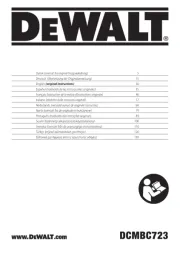
4 Juli 2025

11 Februari 2025

2 Januari 2025

2 Januari 2025

2 Januari 2025

22 November 2024

11 September 2024

15 Juli 2024

15 Juli 2024

15 Juli 2024
Handleiding Zaagmachine
- Wolfcraft
- Florabest
- Ideal
- Bosch
- Royal Catering
- Prime3
- BGU
- Husqvarna
- Rikon
- Fuxtec
- Fein
- Morrison
- Backyard Pro Butcher Series
- Powerplus
- Avantco
Nieuwste handleidingen voor Zaagmachine
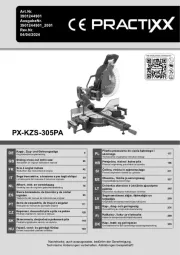
30 Juli 2025
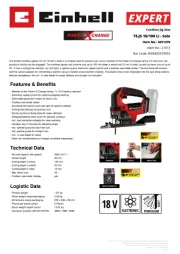
29 Juli 2025
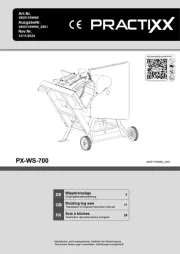
29 Juli 2025
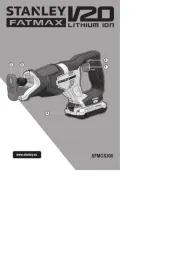
29 Juli 2025
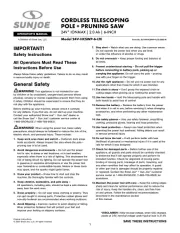
29 Juli 2025
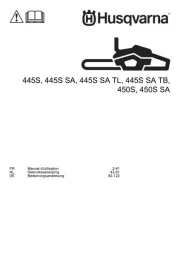
28 Juli 2025
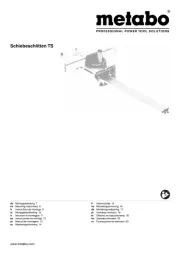
23 Juli 2025
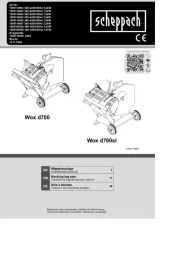
21 Juli 2025
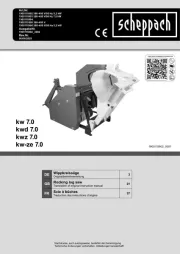
21 Juli 2025
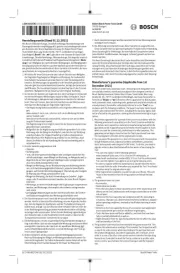
20 Juli 2025